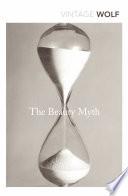“Women who love themselves are threatening; but men who love real women, more so.”
Source: The Beauty Myth
Naomi R. Wolf is a liberal progressive American author, journalist, feminist, and former political advisor to Al Gore and Bill Clinton.
Wolf first came to prominence in 1991 as the author of The Beauty Myth. With the book, she became a leading spokeswoman of what was later described as the third wave of the feminist movement. Such leading feminists as Gloria Steinem and Betty Friedan praised the book; others, including bell hooks, Camille Paglia and Christina Hoff Sommers, criticized it. She has since written other books, including the bestselling book The End of America in 2007 and her latest Vagina: A New Biography.
Her journalism career began in 1995 and has included topics such as abortion, the Occupy Wall Street movement, Edward Snowden and ISIS. She has written in venues such as The Nation, The New Republic, The Guardian and The Huffington Post.
However, Wolf's more recent work has inspired controversy across the political spectrum. Writers in such varied venues as Salon.com, Alternet, Mother Jones, The Atlantic, National Review and The American Spectator have criticized many of her latest journalistic efforts as both conspiratorial and overblown.

“Women who love themselves are threatening; but men who love real women, more so.”
Source: The Beauty Myth
Source: The Beauty Myth (1991), Chapter 6 : 'Hunger', p. 187
Source: The Beauty Myth (1991), Chapter 2 : 'Work', p.45
Source: The Beauty Myth (1991), Chapter 8 : 'Beyond the Beauty Myth', p. 290
“She wins who calls herself beautiful and challenges the world to change to truly see her.”
Source: The Beauty Myth
Source: The Beauty Myth (1991), Chapter 7 : 'Violence', p. 227
In The End of America: Letter of Warning to a Young Patriot https://en.wikiquote.org/wiki/Special:BookSources/1603580115, Wolf, Chelsea Green Publishing (2007), Chapter One, 'The Founders and the Fragility of Democracy,' p. 27
Source: The Beauty Myth (1991), Chapter 7 : 'Violence', p. 222
“The beauty myth is always actually prescribing behavior and not appearance.”
Source: Chapter 1 : 'The Beauty Myth', p. 14
Source: The Beauty Myth (1991), Chapter 5 : 'Sex', p. 174
“What little girls learn is not the desire for the other, but the desire to be desired.”
Source: The Beauty Myth (1991), Chapter 5 : 'Sex', p. 157
Context: The books and films they see survey from the young boy's point of view his first touch of a girl's thighs, his first glimpse of her breasts. The girls sit listening, absorbing, their familiar breasts estranged as if they were not part of their bodies, their thighs crossed self-consciously, learning how to leave their bodies and watch them from the outside. Since their bodies are seen from the point of view of strangeness and desire, it is no wonder that what should be familiar, felt to be whole, becomes estranged and divided into parts. What little girls learn is not the desire for the other, but the desire to be desired. Girls learn to watch their sex along with the boys; that takes up the space that should be devoted to finding out about what they are wanting, and reading and writing about it, seeking it and getting it.
Source: The Beauty Myth (1991), Chapter 7 : 'Violence', p. 254
Source: The Beauty Myth (1991), Chapter 5 : 'Sex', p. 162
The First Amendment and the Obligation to Peacefully Disrupt in a Free Society (22 October 2011), Blog Post http://www.huffingtonpost.com/naomi-wolf/occupy-wall-street-bloomberg-free-speech-right-to-disruption-_b_1026535.html at huffingtonpost.com
Source: The Beauty Myth (1991), Chapter 5 : 'Sex', p. 139
Source: The Beauty Myth (1991), Chapter 5 : 'Sex', p. 172
